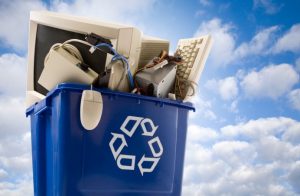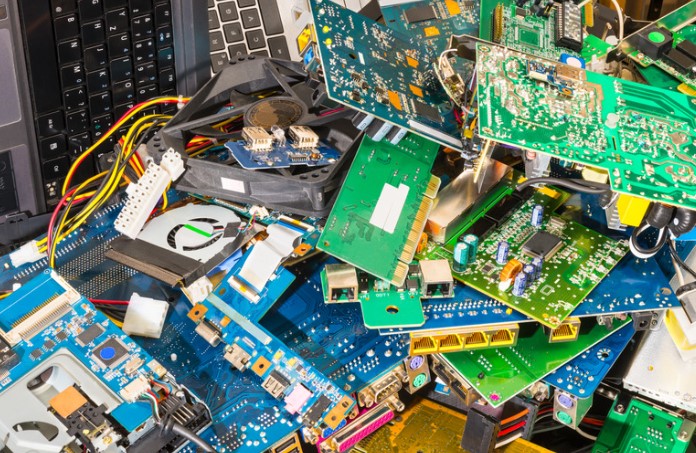We are living in a world where technology is constantly improving and advancing, yet many of these technologies do not have the best impact on our planet. In this article, we will explore how electronic waste has affected the environment and ways to reduce our e-waste.
What are the Effects of E-Waste on the Environment?

E-waste is a type of waste that is created by using electronic devices and electronics. Electronic waste includes products such as computers, monitors, smartphones, and other electronics that are no longer needed or used. According to the United States Environmental Protection Agency (EPA), e-waste accounts for more than 20% of all municipal solid waste. Additionally, the EPA states that e-waste creates environmental problems such as water contamination, air pollution, and global warming.
Water contamination: E-waste contains materials that can contaminate water. When these materials are recycled, it can create toxic liquids and solids called sludges. These sludges can contain heavy metals like lead and mercury which can contaminate water resources. Sludge from electronic waste also contains harmful chemicals such as polyvinyl chloride (PVC) which can pollute water supplies. Safe waste removal company in London will make sure your rubbish elements are collected and disposed off safely.
Air pollution: E-waste contains substances that can create air pollutants. These substances include plastics and chemicals that can be released when the devices are broken down. When these substances are burned, they can create smog and acid rain.
Global warming: E-waste contains materials that release greenhouse gases when they are burned or recycled. These materials include metals like copper and zinc, glass, and plastics. When these materials are burned or recycled, they produce carbon dioxide that contributes to global warming.
Plastic pollution: E-waste contains small pieces of plastic which can contaminate landfills and the water sources that are near them. These pieces of plastic can get into waterways, soil and other natural resources where they interfere with the movement of plants or animals.
Types of E-Waste

No one knows for sure how much electronic waste (e-waste) is produced every year, but it is estimated to be up to 100 million tons.
E-waste contains products from a wide range of industries and uses, including computers, printers, cell phones, TVs, old electric car parts, and gaming systems. Because some products can still be used after they have been recycled, e-waste is not always waste in the traditional sense.
Some people argue that e-waste should not be classified as waste at all because it can sometimes be reused or recycled. However, even if e-waste is recycled properly, it can still create environmental problems.
The biggest problem with e-waste is that it contains hazardous waste materials that can contaminate the environment when they are released into the air or water. E-waste often contains lead, cadmium, mercury, and other heavy metals that can pollute soil and water sources.
E-waste also creates greenhouse gas emissions when it is burned or processed. Burning e-waste produces harmful air pollutants such as carbon dioxide and nitrogen oxide. Processing e-waste into new products can create toxic emissions from mercury and lead. These harmful emissions are especially dangerous for children, who are more likely to put objects in their mouths.
Children also tend to be more likely to put dangerous objects into their mouths. E-waste contains metal that is sharp, hot, or sticky; these materials could present a danger to children who are learning how to use the toilet or play with toys. Taken together, these hazards make e-waste hazardous and dangerous for children, because they have not yet grown up enough to understand the risks of putting potentially harmful things in their mouths.
The environmental dangers associated with e-waste are very serious, but it is possible to prevent many of them by recycling e-waste properly.
Benefits of Recycling

The benefits of recycling electronics are many and varied. Not only does recycling reduce the environmental impact of e-waste, but it also creates new jobs in the process. In addition to helping protect the environment, recycling also helps conserve resources and prevent pollution.
There are a number of ways that recycling can help to protect the environment. For one, electronics contain a large amount of materials that can be re-used or recycled. This means that less material is need to be produced in order to create a new device. In addition, when electronics are recycled correctly, they can be reused more than once. This reduces the amount of new materials that have to be produced in order to create a new device.
In addition to reducing the environmental impact of e-waste, recycling also creates new jobs. Recycling companies need employees who are skilled in handling electronic waste. These workers must be able to identify and remove hazardous materials from the devices while ensuring that they are properly recycled.
Finally, recycling helps conserve resources and prevent pollution. When materials are wasted, they must be replaced either by harvesting new resources or by releasing pollutants into the environment. By using recycled materials, we can reduce both of these impacts.
Ways to Reduce E-Waste

There is no shortage of ways to reduce the amount of electronic waste that is created every day. By following these simple tips, you can help keep your environment clean and healthy while also conserving resources.
- Unplug unused electronics when you’re not using them. This includes devices like phones, televisions, and laptops. It may seem like a hassle at first, but it will eventually become habit and you’ll be less likely to accumulate unnecessary electronic clutter.
- Donate or recycle old electronics when possible. Not only will you be helping the environment, but you’ll also be getting rid of obsolete equipment that is taking up space and energy in landfills.
- Buy secondhand electronics instead of new ones whenever possible. This goes for both hardware and software items. By buying recycled or used gear, you’re helping to reduce the amount of virgin materials that are required to produce new products.
- Educate yourself and your friends about the effects of e-waste on the environment. By raising awareness, you can encourage others to take responsible steps towards reducing their impact on the planet.
- Encourage your friends and family members to recycle electronics that are in good working condition. It’s not uncommon for people to keep consumer electronics that still work even though they don’t need them or use them.
Conclusion
E-waste is a serious problem that we are only starting to understand. The effects of e-waste on the environment are drastic, and it’s something that we need to start paying attention to if we want to see a positive change in the future. There are many ways that you can reduce your own e-waste, and by doing so you will be helping to save both resources and the environment.









